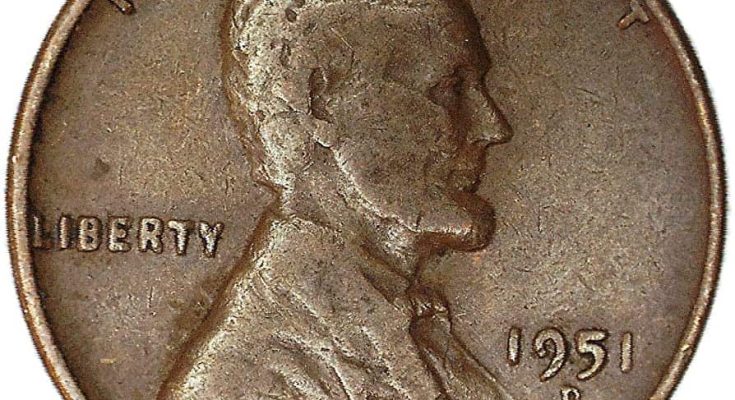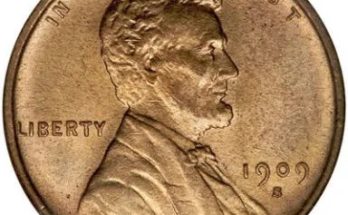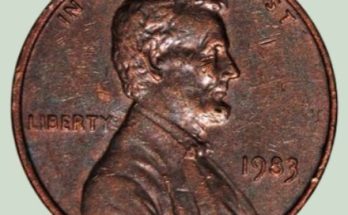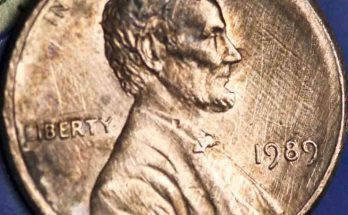Have you ever wondered what tales a small, copper-colored coin in your palm might be holding? It might have been carelessly placed in a child’s piggy bank, dropped on a dusty country road, or misplaced among a handful of change at a busy city market. Nevertheless, this coin is not just any coin; it is a wheat penny from 1951, and as such, it is worth far more than its face value of one cent. So what makes this ordinary bit of money so unique? Let’s examine the background and price of the 1951 wheat penny in more detail.
1951 wheat penny value chart
| Mint Mark | Good | Fine | Extremely Fine | Uncirculated |
| 1951 No Mint Mark Wheat Penny Value | $0.05 | $0.15 | $0.30 | $1.00 |
| 1951 Denver Mint Mark Wheat Penny Value | $0.05 | $0.25 | $0.50 | $0.70 |
| 1951 San Francisco Mint Mark Wheat Penny Value | $0.02 | $0.05 | $0.10 | $1.00 |
1951 No Mint Mark Wheat Penny Value

The mint mark, a tiny letter or symbol identifying the site of the coin’s production, is absent from this specific penny. This coin was made at the Philadelphia Mint, as evidenced by its lack of a mint mark on it.
This mint was the oldest continually running mint in the United States, which was founded in 1792. Over its history, it has made innumerable coins, including the famous American Eagle and Liberty Bell. The Philadelphia Mint was one of just three mints operating in the country at the time 1951 No Mint Mark Wheat Penny was struck; the other two were in Denver and San Francisco.
Abraham Lincoln, the 16th President of the United States, is depicted on the coin’s obverse side. Since its introduction on the penny in 1909, this image has mainly not changed. Two wheat stalks, from which the currency gets its name, as well as the phrases “One Cent” and “United States of America” are depicted on the coin’s reverse side.
The value of the coin can range from a few cents to several thousand dollars, depending on its condition. Collectors highly prize coins that have been well-preserved and show little to no wear.
This coin’s production used a zinc-coated steel composition, which is an essential fact to notice. This was carried out as a cost-cutting strategy during World War II when copper, the traditional metal used in the manufacturing of pennies, was in limited supply.
1951 Denver Mint Mark Wheat Penny Value

Coin collectors have shown an interest in the 1951 Denver Mint Mark Wheat Penny. This cent is distinctive because the letter “D” appears on the back, signifying that it was produced at the Denver Mint.
The image of Abraham Lincoln, the 16th President of the United States, can be found on the coin’s obverse. Since its debut on the penny in 1909, this image has remained substantially unaltered. Two wheat stalks with the phrases “One Cent” and “United States of America” are depicted on the coin’s reverse side.
A 1951 Denver Mint Mark Wheat Pennies worth might vary significantly depending on its condition. Collectors prize coins that are in excellent condition and show little to no wear and can sell for a high price at auction. Like other rare coins, value is mostly influenced by rarity, condition, and historical relevance. As an example, one of these coins rated as 1951 1C MS67 Red was sold at an auction in Orlando for $10,350, an auction record for this type of coin.
Among their common errors, weak strikes are the most frequent type of mistake that may be seen on coins made at the Philadelphia Mint. Weak strikes happen when the coin isn’t struck hard enough, which makes parts of the design elements appear hazy or incomplete. Many factors, including a worn or damaged die, a weak striking force, or improperly oriented dice, may contribute to this.
1951 San Francisco Mint Mark Wheat Penny Value

The San Francisco Mint Mark Wheat Penny from 1951 is a coin rich in mystery and history. This penny, which was struck at one of only three mints in the country at the time, features the distinctive letter “S” of the San Francisco Mint on the reverse.
Since its founding in 1854, the San Francisco Mint has created innumerable coins, including the famous Morgan silver dollar and the Peace silver dollar. The San Francisco Mint was one of only three mints operating in the country at the time and made 43,019,000 1951 wheat coins, the least amount out of the three mints.
The 1951 S Mint Mark Wheat Penny is not generally considered to be a rare or valuable coin. In circulated conditions, it is typically worth only a few cents. Even in uncirculated condition, the value of a 1951 S Wheat Penny is generally around a dollar.
There are some special circumstances that could make a particular 1951 S Wheat Penny more valuable, such as if it has a specific error or variety, or if it is in exceptionally good condition, and their prices can go up to $50.
The most common error associated with the 1951 San Francisco (S) Mint Mark Wheat Penny is the presence of die cracks. Die cracks can be seen on the 1951 S Wheat Penny in a number of places, including inside the wheat ear and close to the edges. Even though these mistakes are rather frequent, unless they are particularly serious or noticeable, they have little impact on the coin’s value.
1951 Wheat Penny Grading
A 1951 Wheat Penny must be graded carefully in order to determine its general condition, which includes the sharpness of its design components, the degree of wear on the surface, and the presence of any obvious damage or faults. A coin’s condition is rated by experts using a scale of 1 to 70, with higher numbers denoting higher quality.
If you would like to know more about how grading works or even try to grade a coin yourself, you can check out this useful video, which shows exactly what you should pay attention to.
1951 Wheat Penny Errors
The 1951 Wheat Penny, like any other coin, can have errors that occurred during its production process. Here are some of the most common 1951 Wheat Penny errors:








